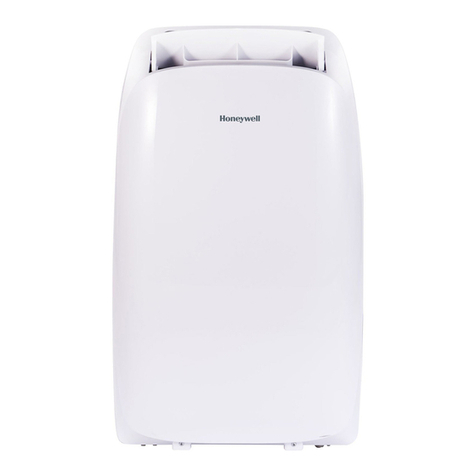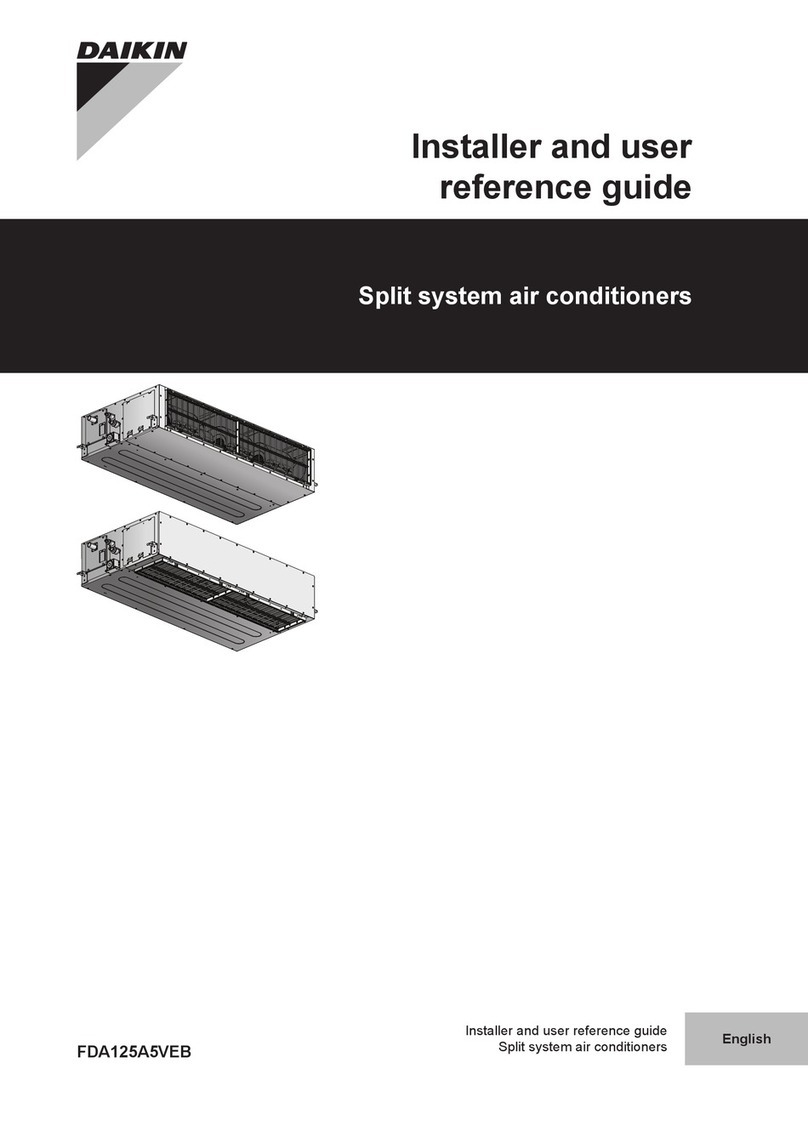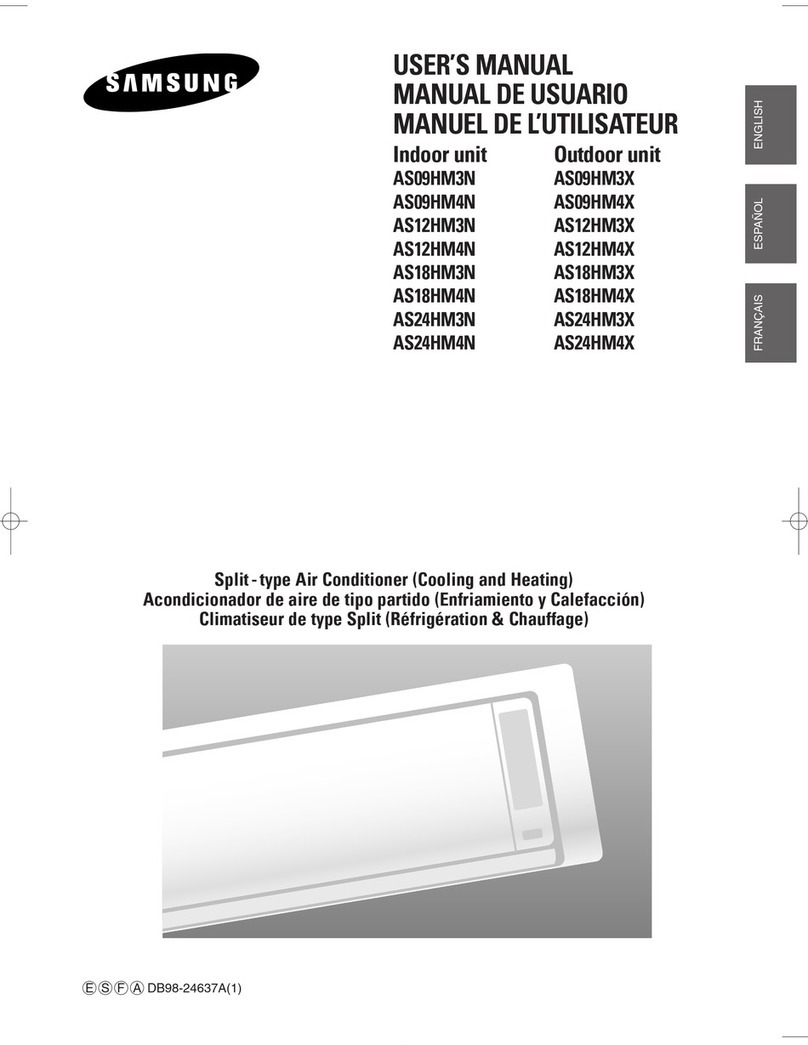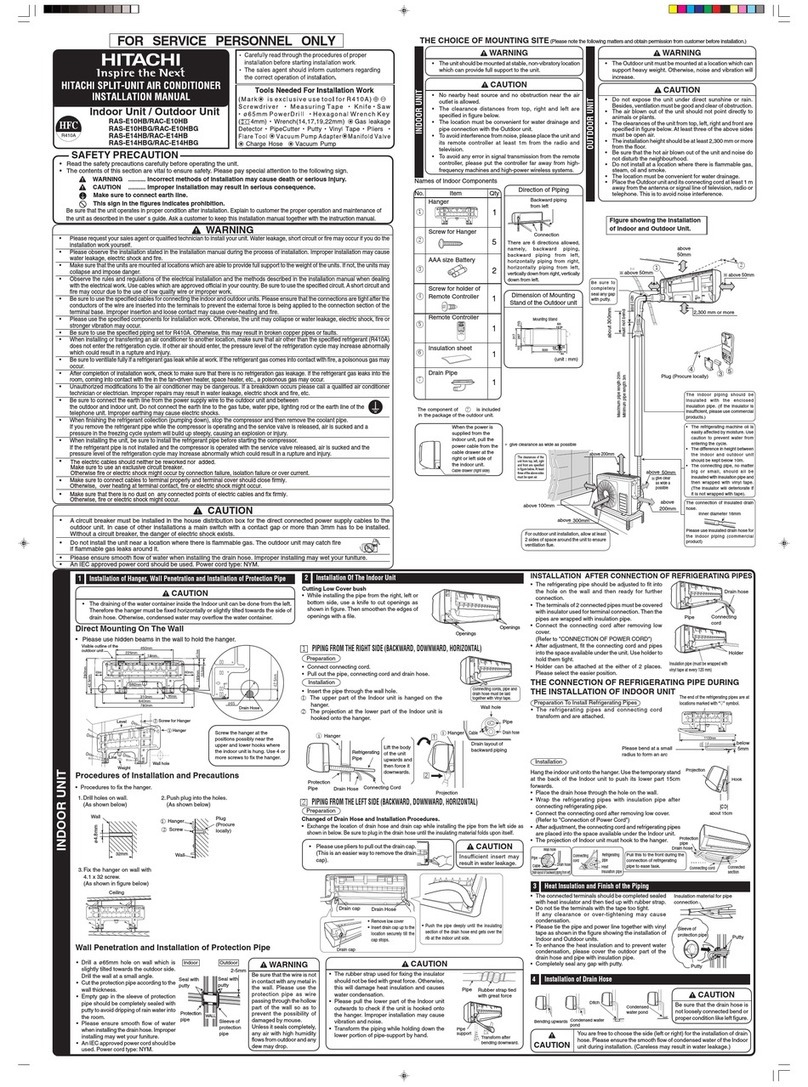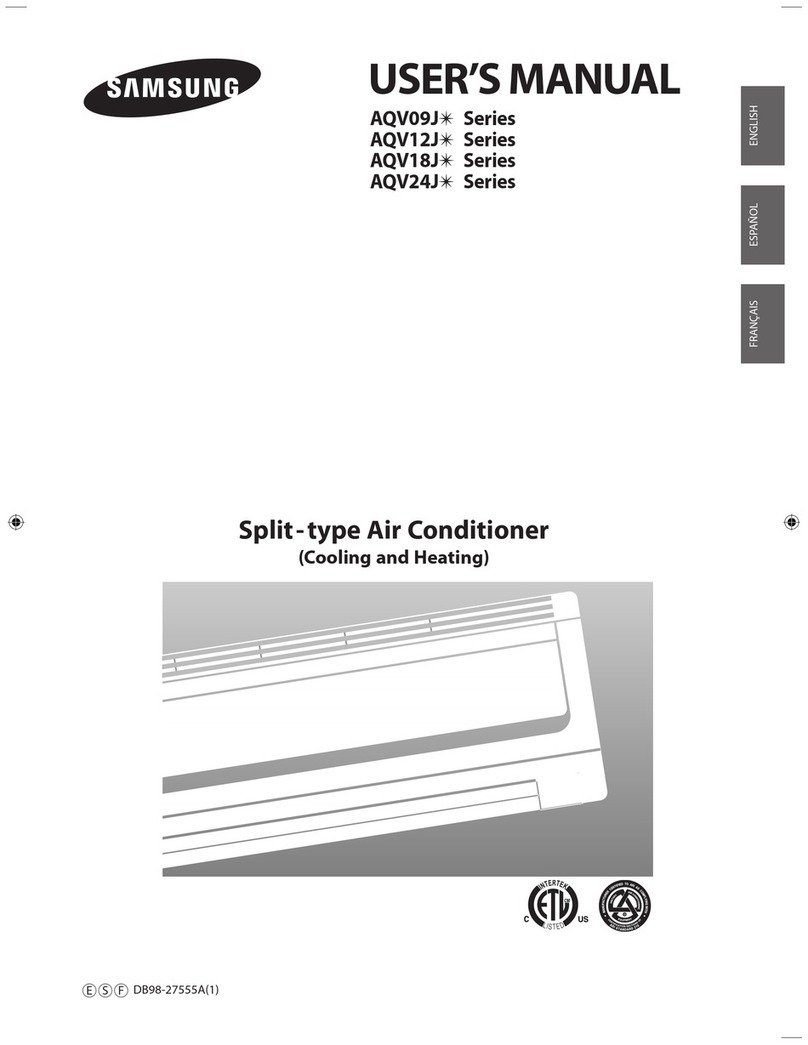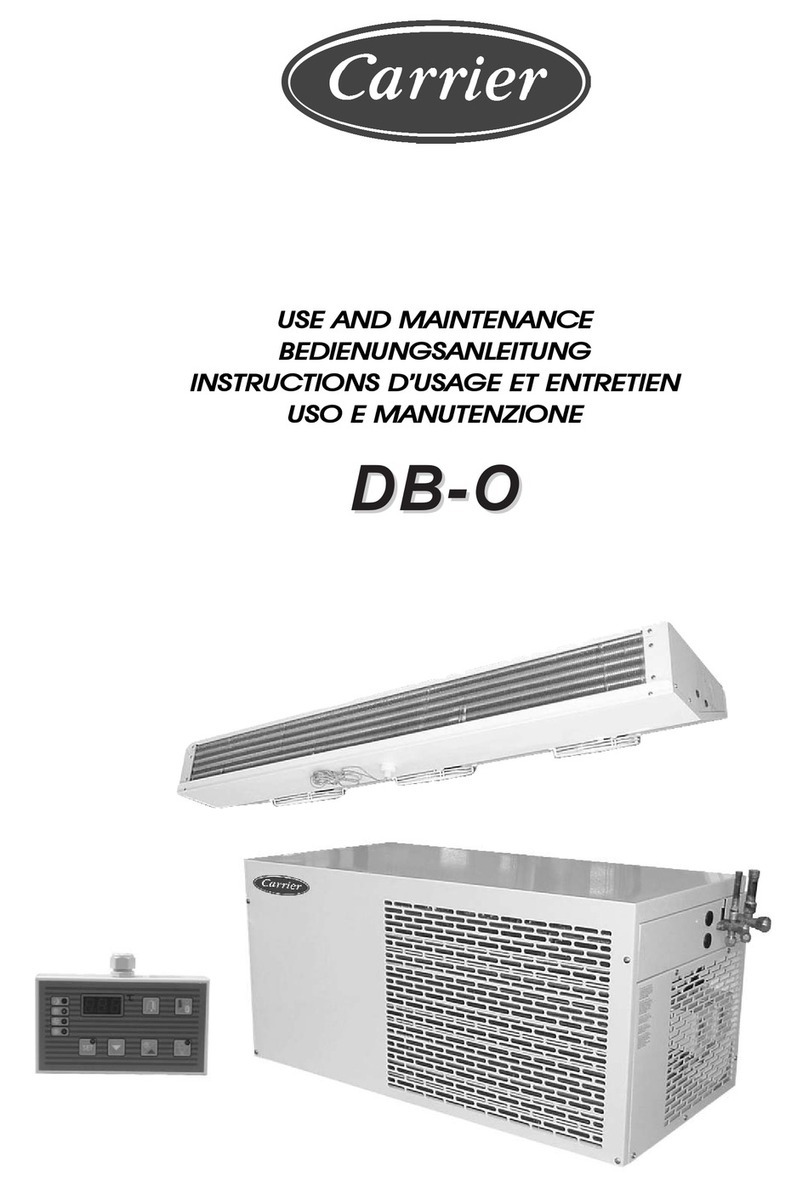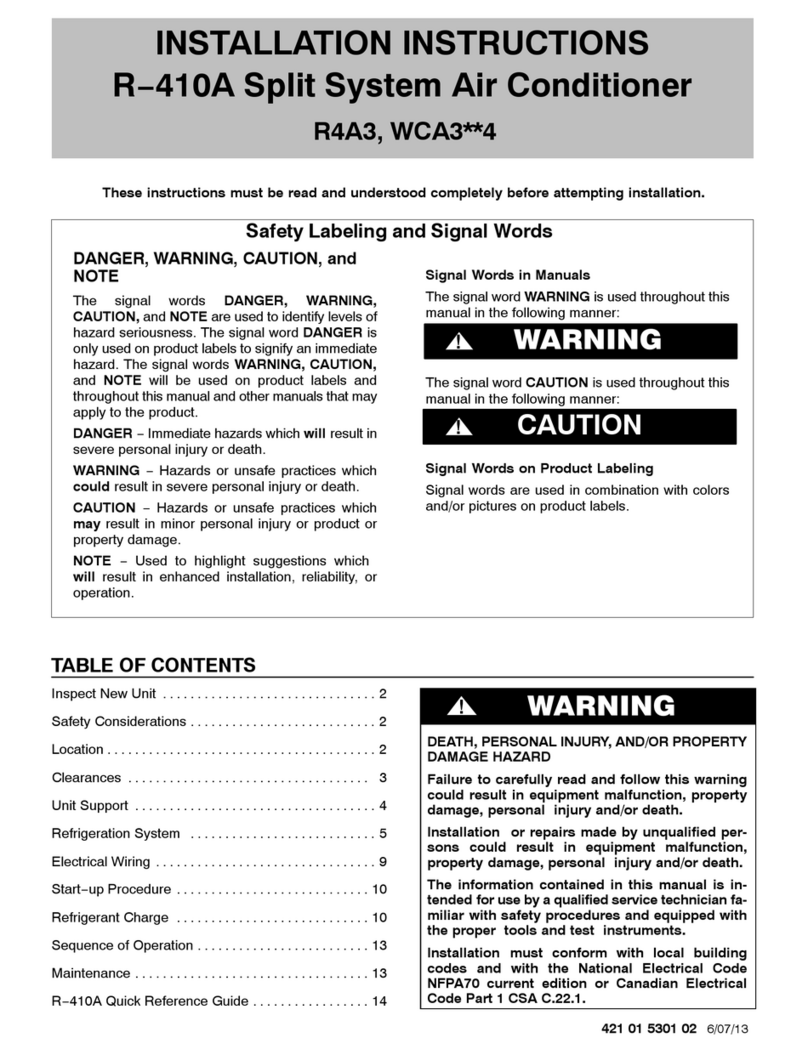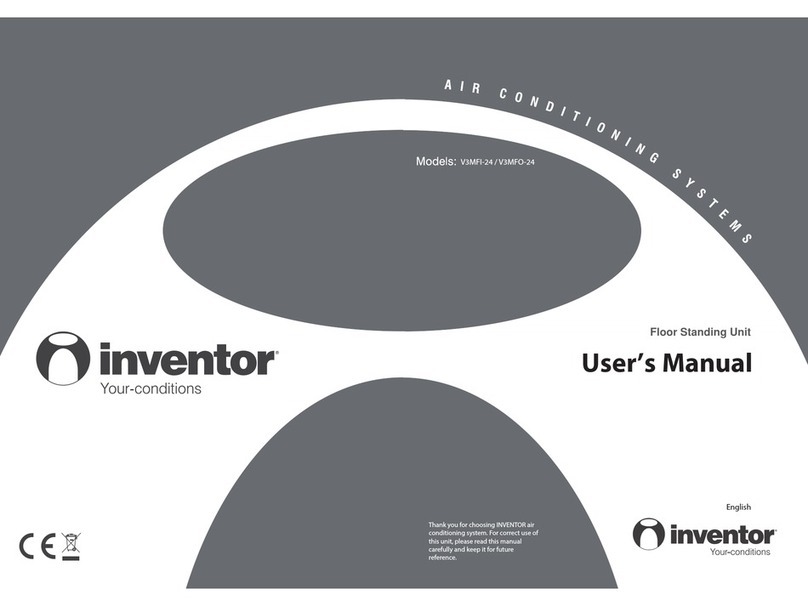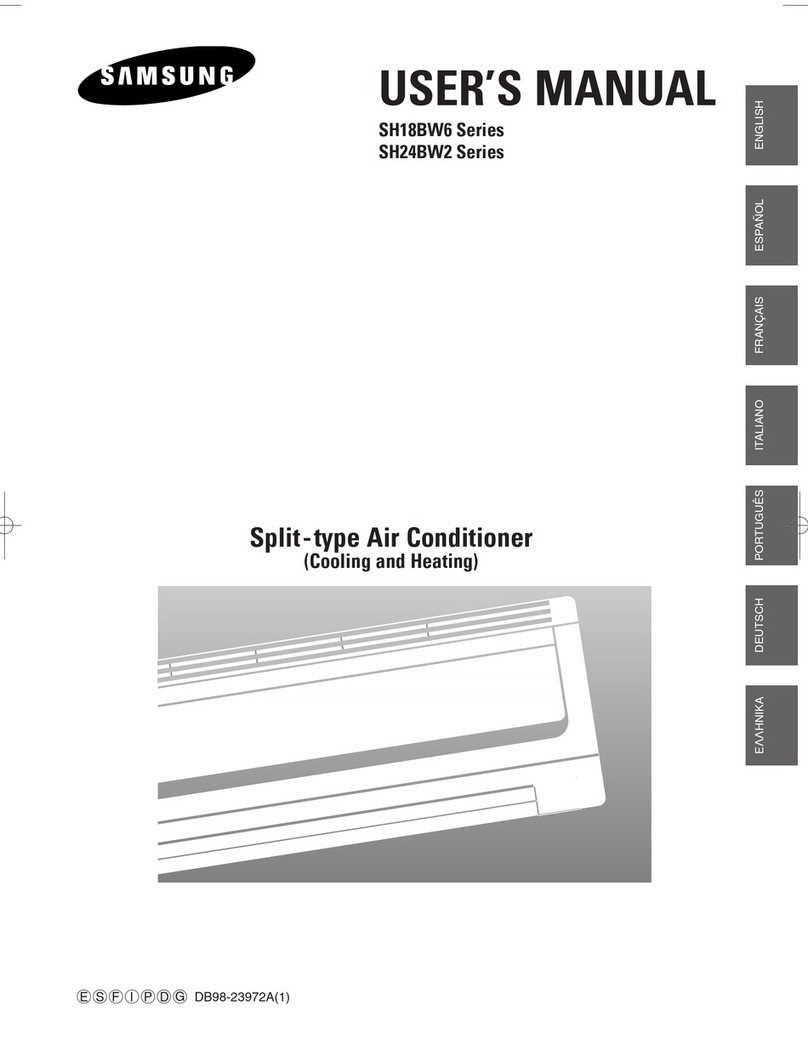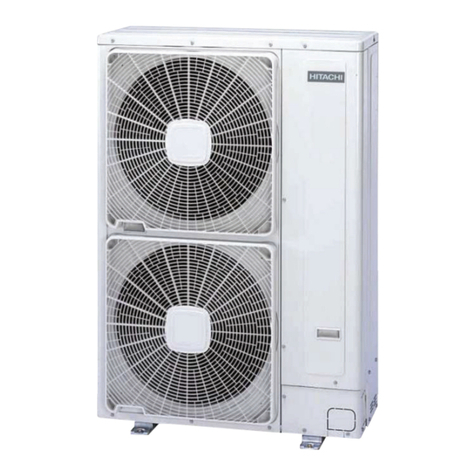BlueBox Datatech User manual

Datatech EN
07-10-2016
Installation, use and maintenance manual

2
We reserve the right to make changes without any prior notice.Translation from original instructions
THANK YOU
Thank you for choosing our product.
It is the result of many years’ experience and careful design and has been built with rst-class quality materials and advan-
ced technologies.
The CE marking also guarantees that the equipment meets the requirements of the European Machinery Safety Directive.
The quality level is constantly monitored, and therefore our products are synonymous with Safety, Quality and Reliability.
Changes considered necessary for product improvement may be made to the stated data at any time without any obligation
to give prior notice.
Thank you again
Read this manual carefully before installing, testing or starting this unit.
Give this manual and all complementary documentation to the operator of the system who will be responsible
for keeping them so they are always available if needed.
The images and drawings contained herein are examples only.

3
We reserve the right to make changes without any prior notice. Translation from original instructions
Contents
1 Introduction 6
1.1 Conformity 6
1.2 Description 6
1.2.1 Symbols 6
1.2.2 Labels 7
2 Safety 8
2.1 General safety precautions 8
2.1.1 Discharge of the safety valves 9
2.2 Basic rules 10
2.2.1 Waterowrateattheheatexchangers 11
2.2.2 Watercomposition 11
2.3 Noise 12
2.4 Residual risks 12
2.5 Safety information on the refrigerant uid 13
2.5.1 Hazardsandhealthconsequences 13
3 Receiving the product and storage 14
3.1 Reception 14
3.2 Transport 14
3.3 Handling 15
3.3.1 Monoblocunit 15
3.3.2 Unitswithseparateventilationsection 17
3.4 Storage 17
4 Product description 18
4.1 Intended use 18
4.2 Unintended use 18
4.3 Control and safety devices 19
4.4 Principles of operation 19
4.5 Structure 19
4.6 Specications 19
4.7 Air system 20
4.7.1 Unitfans 20
4.7.2 Airowsensor/differentialfanpressure 20
4.7.3 Airowsensor 21
4.7.4 Dirtyltersensor(optional) 21
4.7.5 Dischargeairpressuresensor(optional) 21
4.7.6 Airlters 22
4.7.7 Humidier 22
4.8 Control panel 23

4
We reserve the right to make changes without any prior notice.Translation from original instructions
4.8.1 Switchingtheuniton/off 23
4.8.2 Changeofsetpoints 23
4.9 Wiring diagram 24
5 Installation 25
5.1 Dimensions and weight 25
5.2 Place of installation 25
5.3 Installation 26
5.3.1 Positioningtheunits 26
5.3.2 Thebaseframe(VersionsUNDER) 27
5.3.3 Separatefansection 27
5.3.4 Positioningtheaircondenser 27
5.3.5 Minimumdistances 28
5.4 Hydraulic connections 29
5.4.1 Connectionstotheplatecondenser 29
5.4.2 Connectionstothewaterchillercoils 30
5.4.3 Connectiontothecondensatedrain 30
5.4.4 Connectiontothehotwatercoil 31
5.4.5 Connectiontothehumidier 31
5.5 Electrical connections 32
5.6 Refrigeration connections 33
5.6.1 Pipingimplementation 33
5.6.2 Changesintemperatureandspeedinthecoolinglines 38
5.6.3 Changeinperformance 40
5.7 Vacuum and refrigerant charge 41
6 Commissioning 42
6.1 Preliminary operations 42
6.2 First starting 43
6.3 Calibration of safety components 44
6.4 Checks during operation 45
6.5 Alarms and malfunctions 46
6.6 Temporary stop 47
6.7 Stop for long periods of time 47
7 Maintenance 48
7.1 Adjustments 48
7.2 External cleaning 49
7.3 Internal cleaning 49
7.3.1 Cleaningtheunit 49
7.4 Periodic checks 50
7.5 Unscheduled maintenance 51
7.5.1 Specialwork 51

5
We reserve the right to make changes without any prior notice. Translation from original instructions
8 Decommissioning 52

6
We reserve the right to make changes without any prior notice.Translation from original instructions
1 INTRODUCTION
1.1 Conformity
With regard to relevant regulations and directives, see the declaration of conformity that is an integral part of the manual.
1.2 Description
1.2.1 Symbols
A description of the main symbols used in this manual and on the labels afxed to the unit is given below.
Danger symbol; take extreme care.
Danger symbol; moving mechanical parts.
Danger symbol; live parts.
Warning symbol; important information
Note symbol; suggestions and advice

7
We reserve the right to make changes without any prior notice. Translation from original instructions
1.2.2 Labels
For the constructional features, available models and technical data, please refer to the Technical Booklet.
The model, serial number, features, power supply voltage and so on are shown on the labels afxed to the unit (the following
illustrations are shown only as an example).
The Manufacturer adopts a continuous development policy and, in this perspective, reserves the right to
make changes and improvements to the documentation and to the units without prior notice.
The technical booklet, the labels placed directly on the unit and the various diagrams referred to below, must
be considered an integral part of this manual.
Do not remove or alter the labels placed on the unit.

8
We reserve the right to make changes without any prior notice.Translation from original instructions
2 SAFETY
2.1 General safety precautions
The equipment operator is responsible for complying with regulatory obligations.
The equipment operator is the person who has actual control over the technical operation and free access, which means
the possibility of monitoring its components and their operation and the possibility of granting access to third parties.
The equipment operator has the power (including nancial power) to decide on technical modications, checks and repairs.
The equipment operator may give instructions to employees or to external companies for carrying out maintenance and
repair operations.
Only an authorised operator should be able to access the unit.
Installation and maintenance or repair of the unit must be carried out by personnel and companies holding a certicate
issued by a certication body designated by a member state that certies the requirements contained in Commission Re-
gulation (EC) No. 517/2014.
The internal danger zone can be accessed by removing the protective devices and entering the unit.
On no account must unqualied personnel be allowed to enter the unit and no one should be allowed to enter before the
power to it has been turned off.
The user can interact with the unit only through the control and external OK signals.
Only authorised knowledgeable personnel may access the unit in compliance with safety in the workplace regulations.
Council Directive 89/391/EEC, of 12 June 1989, on the introduction of measures to encourage improvements in the health
and safety of workers at work.
Also, knowledge and understanding of the manual are indispensable for reducing risks and for improving the health and
safety of workers.
The operator who enters the unit must have sufcient knowledge to perform the various activities throughout the technical
life of the machine.
The operator must know what to do when faced with possible anomalies, malfunctions or conditions of danger to himself or
others, and in any case, he must comply with the following instructions:
Do not do anything that goes beyond your duties and technical knowledge.
Inform the manager immediately and do not take personal initiatives.
Before carrying out any work on the unit, make sure you have turned off the power supply to it. Refer to the
section on maintenance work.

9
We reserve the right to make changes without any prior notice. Translation from original instructions
In units with capacitors and/or inverters, certain components can remain live for several minutes even after
having turned off the main switch.
Wait 10 minutes before working on the electrical parts of the unit.
Circuits supplied from external sources (made with orange cable) can remain live even after the power sup-
ply to the unit has been turned off.
Work on the unit only if there is sufcient lighting for the type of work to be carried out.
Failure to comply with the instructions in this manual and any modications made to the unit without prior written consent,
will immediately void the warranty.
The law regulating the use of stratospheric ozone depleting substances prohibits the release of refrigerant
gases into the environment and obliges owners to recover and return them to the dealer or take them to
special collection centres at the end of their operational life.
The refrigerant contained in the refrigerant circuit is included among the substances subject to special con-
trol regulations provided for by law and must therefore be disposed of as indicated above.
Particular care should be taken during maintenance operations in order to reduce refrigerant leaks as much
as possible.
2.1.1 Discharge of the safety valves
If present on the refrigerant circuit, installation requirements and/or national regulations lay down that the discharge of the
safety valves must be routed to the outside.
The conveying must be done with a pipe whose diameter must be at least that of the valve outlet, and the weight of the pipe
must not be borne by the valve.
Always direct the discharge to areas where the jet cannot cause harm to anyone.
Risk of burns following contact with hot and cold parts.

10
We reserve the right to make changes without any prior notice.Translation from original instructions
2.2 Basic rules
All the units are designed and built in compliance with Directive 2014/68/EU of the European Parliament and of the Council
of 15 May 2014 on the approximation of the laws of the Member States relating to pressure equipment.
To ensure maximum safety, in order to prevent possible risks, follow the instructions below:
- this product contains pressurised vessels, live components, moving mechanical parts and very hot and cold surfaces
that, in certain situations, can pose a risk: all maintenance work must be carried out by skilled personnel equipped with
the necessary qualications in accordance with current regulations. Before carrying out any operation, make sure that
the personnel in charge has full knowledge of the documentation supplied with the unit.
- always have a copy of the documentation near the unit.
- The operations indicated in this manual must be integrated with the procedures indicated in the user instruction manuals
of the other systems and devices incorporated in the unit. The manuals contain all the necessary information for safely
managing the devices and the possible operating modes.
- use suitable protection (gloves, hard hat, protective glasses, safety shoes, etc.) for all maintenance or control opera-
tions carried out on the unit.
- Do not wear loose clothing, ties, chains, watches, etc., which can get caught in the moving parts of the unit.
- always use tools and protective equipment in excellent condition.
- The compressors and delivery gas pipes are at high temperature. Therefore, when working in the immediate vicinity, be
careful to avoid touching any components of the unit without suitable protection.
- do not work in the discharge trajectory of the safety valves.
- if the units are positioned in unprotected places which can easily be reached by unqualied persons, suitable protection
devices must be installed.
- the user must consult the installation and use system manuals, incorporated and attached to this manual.
- there may be potential risks that are not obvious. Warnings and signals are therefore displayed on the unit.
- Do not remove the warnings.
It is expressly forbidden to:
- remove or disable the safety guards;
- tamper with and/or modify, even partially, the safety devices installed on the unit.
If there are alarm warnings and consequent tripping of the safety devices, the user must call in skilled maintenance techni-
cians to x the problem immediately.
An accident can lead to serious injury or death.
The safety devices must be tested according to the guidelines in this manual.
The manufacturer does not assume any liability for damage/injury to persons, pets or objects arising from the re-use of
individual parts of the unit for functions or assembly situations different from the original ones. Tampering with/unauthorised
replacement of one or more parts of the unit is prohibited.
The use of accessories, tools or consumables other than those recommended by the Manufacturer relieves the latter from
civil and criminal liability.
Deactivation and scrapping of the unit must be carried out only by suitably trained and equipped personnel.
The units do not fall within the scope of Directive 94/9/EC of the European Parliament and of the Council, of
23 March 1994, on the approximation of the laws of the Member States relating to equipment and protective
systems intended for use in potentially explosive atmospheres.

11
We reserve the right to make changes without any prior notice. Translation from original instructions
2.2.1 Waterowrateattheheatexchangers
It is necessary to ensure that the water ow rate during operation is the nominal ow rate of the unit stated in the Technical
Booklet.
In any case, refer to the specic Technical Booklet for the allowed conditions for water ow in and out of the
exchangers.
2.2.2 Water composition
Dissolved substances in the water can cause corrosion in the heat exchangers.
It is mandatory to make sure the parameters of the water comply with the following table:
Description Values
Total hardness 2,0 ÷ 6,0 °f
Langelier index - 0,4 ÷ 0,4
pH 7,5 ÷ 8,5
Electrical conductivity 10÷500 µS/cm
Organic elements -
Hydrogen carbonate (HCO3-) 70 ÷ 300 ppm
Sulphates (SO42-) < 50 ppm
Hydrogen carbonate / Sulphates (HCO3-/SO42-) > 1
Chlorides (Cl-) < 50 ppm
Nitrates (NO3-) < 50 ppm
Hydrogen sulphide (H2S) < 0,05 ppm
Ammonia (NH3) < 0,05 ppm
Sulphites (SO3), free chlorine (Cl2) < 1 ppm
Carbon dioxide (CO2) < 5 ppm
Metal cations < 0,2 ppm
Manganese ions (Mn++) < 0,2 ppm
Iron ions (Fe2+, Fe3+) < 0,2 ppm
Iron + Manganese < 0,4 ppm
Phosphates (PO43-) < 2 ppm
Oxygen < 0,1 ppm
ppm = mg/l
The use of water with values above the limits stated in the table will immediately void the warranty.
It is mandatory to include a system for eliminating possible organic substances in the water that could pass through the lter
and settle in the heat exchangers, which would lead to malfunctioning and/or breakage over time.
The use of water containing organic substances will immediately void the warranty.

12
We reserve the right to make changes without any prior notice.Translation from original instructions
2.3 Noise
The starting of the unit, with activation of its components, emits a noise whose intensity varies depending on the operating
level.
The correct location choice and the correct installation prevent the unit causing annoying noise due to resonances, reections
and vibrations.
2.4 Residual risks
The unit uses technical means suitable for protecting people, animals and things against hazards that cannot reasonably
be eliminated or sufciently reduced through design.
The presence of an operator is not required for normal operation of the unit. The change from the "OFF" state to the "ON"
state, and vice versa, of the unit can be carried out remotely or through the display, without having to enter areas at risk.
Access restriction is part of correct installation to eliminate residual risks during normal operation.
Removal of the restrictions gives access to cold parts, hot parts and sharp edges.
When the electrical boxes and the electrical control panel are open, live parts can be accessed.
Do not:
- remove or disable the safety guards;
- tamper with and/or modify, even partially, the safety devices installed on the unit.

13
We reserve the right to make changes without any prior notice. Translation from original instructions
2.5 Safetyinformationontherefrigerantuid
This chapter only applies to units equipped with a cooling circuit; It does not apply to those where there are
only one or two water coils.
This product contains uorinated greenhouse gases included in the Kyoto protocol. Do not release these gases into the
atmosphere.
Type of refrigerant: R410A
GWP value: 2088.
GWP is the global warming potential.
The quantity of refrigerant uid is indicated in the unit’s data label. Periodic inspections are necessary to check for refrige-
rant uid leaks in accordance with local and/or European regulations.
2.5.1 Hazards and health consequences
If accidentally released, rapid evaporation of the liquid can cause freezing.
In case of contact with the liquid:
- defrost the various part with water;
- remove clothing carefully;
- rinse thoroughly with water.
Contaminated clothing and shoes should be washed before reuse.
High vapour concentrations can cause headaches, dizziness, drowsiness and nausea, and may lead to unconsciousness
and cardiac arrhythmia.
If inhaled move the victim to fresh air. Articial respiration and/or oxygen may be necessary. Call a doctor immediately.
In case of contact with eyes, remove contact lenses. Rinse immediately with plenty of water, holding the eyelids open, for
at least 15 minutes.
The safety data sheet drawn up by the producer of the refrigerant can be obtained from the manufacturer of
the unit.

14
We reserve the right to make changes without any prior notice.Translation from original instructions
3 RECEIVING THE PRODUCT AND STORAGE
3.1 Reception
On receiving the unit, check that it is undamaged, bearing in mind that it left the factory in perfect condition.
Report any signs of damage immediately to the transporter and make a note of these on the Delivery Sheet before signing
it.
The relevant sales department or the manufacturer should be informed of the extent of the damage as soon as possible.
The Customer must draw up a written and photographic report concerning any and all signicant damage.
Disposal of the packing material is the responsibility of the consignee and must be carried out in compliance with the regu-
lations in force in the country in which it is carried out.
3.2 Transport
The unit is sent from the factory using suitable vehicles, with correct locking in order to prevent any possibility of movement
whilst in transit by road that may damage it or cause accidents.
If there is to be trans-shipment to other vehicles to continue the journey, it is essential to adopt all necessary measures for
ensuring the correct safety conditions, with regard to the vehicles used and the anchorage, in order to prevent damage.
If the unit is to be transported over uneven roads, the manufacturer must be informed beforehand so that suitable measures
can be taken in order to prevent damage to the unit.
If it is to be transported by container, make sure it is correctly anchored.

15
We reserve the right to make changes without any prior notice. Translation from original instructions
3.3 Handling
Before each unit handling operation, check that the lifting capacity of the machinery used is compatible with the weight of
the unit.
Handling must be carried out by adequately equipped qualied personnel.
In all lifting operations, make sure the unit is rmly secured in order to prevent accidental falls or overturning.
Lifting must be carried out by qualied and authorised personnel taking the necessary precautions; if carried
out incorrectly, lifting can cause serious damage and physical injury.
The handling operations must be carried out slowly and sudden manoeuvres and knocks must be avoided.
Do not, under any circumstances, stand or pass under or near the unit when it is lifted off the ground. Use
only the lifting system designed and prepared for the unit.
During unloading and positioning of the unit, great care must be taken to prevent sudden or violent manoeuvres, and the
components of the unit must not be used as lifting points.
Make sure the machinery and lifting ropes are of suitable size and capacity and strictly follow their operating instructions.
Use only equipment that is in excellent working order.
All work on the unit, including unpacking and connections, must be carried out with the unit resting on the ground.
Refer, in any case, to the lifting instructions provided with the unit.
Be careful when handling. The centre of gravity of the unit is high.
3.3.1 Monobloc unit
The units are dispatched screwed onto pallets having anti-overturning boards. To unload them from the vehicle, use a forklift
truck or a crane.
If a forklift truck is used, insert the forks under the unit on the side where the anti-overturning boards are xed, with the forks
as far apart as possible, until they protrude from the back of the base, and keep the centre of gravity of the unit centred
between the forks.
If a crane is used, employ synthetic slings to secure the pallet, or suitable lifting equipment. It is mandatory to use a lifting
beam adjusted to the width of the unit in order to ensure lifting stability. Also, suitable protective devices must be placed on
the upper edges to prevent the slings from coming into contact with the unit. If the unit is shipped in rigid packaging, this
precaution is not necessary.
Fig. 1 Position of the slings

16
We reserve the right to make changes without any prior notice.Translation from original instructions
Pallet trucks or forklift trucks with short forks can be used (e.g. piano lifts) for handling inside buildings.
The unit should be lifted as little as possible when handling in order to avoid overturning risks.
If forklift trucks with short forks are used, position some protective material between the unit and the forklift trucks and the
clamping belts.
Fig. 2 Pallet trucks and forklift trucks with short forks
At least two people must be present while the unit is being handled with forklift trucks with short forks.
Before sliding out the pallet, remove the screws xing it to the unit. Use a 13 mm spanner to unscrew them.
The screws which x the pallet to the unit are located in correspondence with the holes on the pallet’s bottom axis.
Fig. 3 Position of fixing screws
To remove the fork lift trucks:
- lowering the forklift trucks as much as possible;
- remove the belts securing the trucks to the unit;
- Use a crowbar or a similar device to lift the unit enough to allow the removal of the trucks from each side;
- Remove the protective devices from the unit.
Fig. 4 Sequence of operations to remove the pallet

17
We reserve the right to make changes without any prior notice. Translation from original instructions
3.3.2 Unitswithseparateventilationsection
The same means used for the unit can be employed to handle the fan section.
3.4 Storage
The units are built to be installed in indoor environments.
Storage outdoors is not allowed. Upon receipt they must be put in locations protected from weather agents.
Since the remote condensing unit is designed to be installed outdoors, it can withstand outdoor atmospheric conditions.
For the condensing unit, must be pay attention to the place where it is placed, which must be on the at, in order to avoid
deformation of the structure with consequent possible breakage.

18
We reserve the right to make changes without any prior notice.Translation from original instructions
4 PRODUCT DESCRIPTION
4.1 Intended use
The units are designed to control the air temperature and humidity, in "close control" applications and in technological ones
in general.
Their use is recommended within the operating limits indicated in the Technical Booklet.
4.2 Unintended use
The unit must not be used:
- in an explosive atmosphere;
- in a ammable atmosphere;
- in extremely dusty environments;
- in an environment that is not compatible with the stated IP protection rating;
- by untrained personnel;
- in a way that does not comply with the regulations in force;
- with incorrect installation;
- with power supply defects;
- with total or partial failure to comply with the instructions;
- with lack of maintenance and/or use of non-original spare parts;
- with inefcient safety components;
- with modications or other work not authorised by the Manufacturer.

19
We reserve the right to make changes without any prior notice. Translation from original instructions
4.3 Control and safety devices
The unit is integrally managed by an electronic microprocessor control that, through the various temperature and pressure
sensors installed in the unit, keeps its operation within the safety limits.
All the parameters involved with control of the unit are shown in the “Control Manual” that is an integral part of the docu-
mentation of the unit.
The manual fully describes the logic with which the checks of the unit take place during the various operating stages.
The devices are shown in the technical booklet.
4.4 Principles of operation
These units are precision air conditioners that provide safe working conditions for Data Centres, computer rooms and other
technological applications where a highly sensitive heat discharge and a precise temperature and humidity check are re-
quired. The parameters controlled are temperature, humidity and air quality according to the degree of ltration. Moreover,
these units are used in installations where an uninterrupted service must be guaranteed and are therefore equipped with
redundancy features.
4.5 Structure
The cabinet is made with sandwich panels of galvanized steel sheet and coated with epoxy. The panels are internally insu-
lated with glass wool, to obtain re insulation class A1 in accordance with EN13501. This type of panel allows good thermal
and acoustic insulation.
Air tightness is achieved with adhesive sealing strips placed all around the edges of the panels.
The uprights and inlls are made of galvanized steel sheet.
The front panel closing the electrical control panel can be opened by a handle for an easy inspection of the inside. Access to
all refrigerant and electrical components of the unit is from the front of the machine only; this solution makes it unnecessary
to carry out any work from the side and eliminates the obligation to consider “technical spaces” around the air conditioning
units. All the materials forming the body are recyclable and CFC-free.
4.6 Specications
Direct expansion precision air conditioner with hermetic compressor and evaporator coil, and / or chilled water coil, radial
fans.
The direct expansion versions can be equipped with a water condenser integrated in the unit or connected to remote air
condensers.

20
We reserve the right to make changes without any prior notice.Translation from original instructions
4.7 Air system
4.7.1 Unit fans
The units of the series are equipped with radial fans with reverse blades, with external rotor motor directly coupled to the
impeller. These fans do not need any special maintenance as they do not have any couplings (belts, pulleys).
The fans can be integrated in the unit or supplied in a separate section.
The fans are of two different types, referred to as "AC" and “EC":
- AC: alternating current motor, adjustable speed by means of autotransformer on board the machine. The autotransfor-
mer has different output voltages and can, by changing the wiring, power the motor at different voltages in order to
achieve the required airow and static pressure performances. The units have a standard default connection which,
nevertheless, may need to be checked and adapted to the specic installation.
- EC: electronically commutated "brushless” motor. The fan is powered by mains AC voltage, speed control is obtained
via control signal DC 0-10V coming from the microprocessor mounted on board the unit. It is thus possible to set the
required speed directly through the parameter being displayed.
Both motors are equipped with an alarm signal, which in the AC version is in fact equal to the thermal protection, whilst in
the EC version it includes thermal protection, overcurrent, under-voltage, the lack of one or more phases, rotor blockage.
The EC fan is not equipped with a remote control switch and is constantly under tension as soon as the
main switch of the unit is closed.
4.7.2 Airowsensor/differentialfanpressure
The units may be equipped, depending on the options or congurations, with a differential pressure transducer which de-
tects the pressure difference between the inside and the outside (upstream) of the suction nozzle. The pressure difference
is proportional, for each fan/nozzle pair, to the square root of the pressure difference according to the equation:
Q = n • k • √ΔP
where
Q = total air ow [m3 / h]
n = number of fans in the unit
k = constant according to the fan nozzle
ΔP = pressure difference measured on the nozzle [Pa]
the differential pressure value or air ow rate can be seen directly on the microprocessor’s display. If the unit is equipped
with EC-type fans, the microprocessor will also automatically adjust the air ow.
Table of contents



